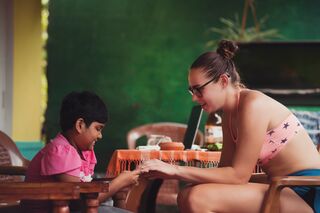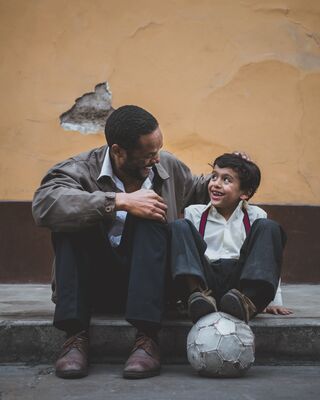Trauma
Start Finding Authentic Connections After Complex PTSD
Even with relational trauma, it's possible to know what "healthy" relating is.
Posted June 14, 2022 Reviewed by Abigail Fagan
Key points
- The desire of so many adults who still manage Complex Post Traumatic Stress Disorder (CPTSD) is for a sense of authentic belonging.
- Stepping into relationships can feel fraught, particularly when people don’t believe they have any idea of what “healthy” looks like.
- Most people had other adults — "helping witnesses" — who gave them an idea of love, kindness and respect.
- Identifying your "helping witnesses" and what they taught you can help you begin to define nourishing relationships in the present.
When we begin to search out new and nurturing relationships, there can be much trial and error. Often it means tolerating the alone space that comes when we first leave damaging relationships. It might mean tolerating what can feel like boredom when a relationship is healthy and calm. And, it involves beginning to define, recognize and choose safe others to relate to, whether friends, family or romantic interests.
Shifting to find and grow healthy connections is difficult when your frame of reference has been relationships that were unpredictable, shaming, scary or untrustworthy. Some of our key strategies for surviving the vagaries of Complex Post Traumatic Stress Disorder (CPTSD) — self-reliance, competence, responsibility — may serve us now and may also at times create a sense of isolation and aloneness. The desire of so many adults who still manage CPTSD is for a sense of authentic belonging. But, stepping out into the world of relating to others can feel fraught, particularly when we don’t believe we have any idea of what “healthy” looks like.
I believe children have an innate sense of what “healthy” feels like. My experience with many clients who managed relational trauma in childhood is they inherently recognized then, and were drawn to find, people in their lives who mirrored kind, respectful and loving attitudes towards them. This occurred even when the child had no one at home providing these fundamentals of loving relatedness. Where does this inner awareness in the child come from? Some traditions and current thinking in psychotherapy believe all humans hold an inviolate Self-energy present from birth. This Self of the child holds compassion, courage and connectedness, among many attributes. This energy is incorruptible and indestructible even under dire circumstances. And, I believe it’s this Self-energy that informs and intuitively guides children to recognize and seek out nourishing connections. It’s the life in the child in a search for what sustains it.

“Look for the helpers. You will always find people who are helping.” —Fred Rogers
Regrettably, this seeking can be taken advantage of by other adults, and create more wounding for the child. And yet, most of us had other adults in our lives who were respectful, kind and provided positive connection. Alice Miller, the German psychoanalyst, called such a person who offers this positive connection a “helping witness.” She writes that while a helping witness “may be completely oblivious to the role they are playing, children in difficult situations can see there is such a thing as love in this world. In the best cases they learn how to develop trust in their fellow humans and to accept the love and kindness that come their way.” These people might have been a teacher, a neighbor, a coach, a boss, a friend’s parent(s), and often I have found, a childcare provider.
Whether or not you had to manage early relational trauma, if you were fortunate, helping witnesses gave you a sense of what was growth-producing in relationships. Answering these questions can be a preliminary guide as you move into the world of relationships in a different way.

- Who were your helping witnesses, and what did you learn from them?
- How did they make you feel? Heard, seen, understood, respected, trusting? Or something else?
- What have you taken into your life today that you learned or experienced with them? Self-respect, self-discipline, integrity?
- What did you learn from them about mutual consideration and respect for your needs, wants, and preferences?
- What did you learn about receiving support and connection?
- What did you learn about acceptance of differences in thoughts, feelings, and perspectives?
- What did you learn about boundaries, and your right to say “no?”
Through trial and error, following what feels true to you, and remembering what felt authentic before, you can begin to write a new relational story going forward.


